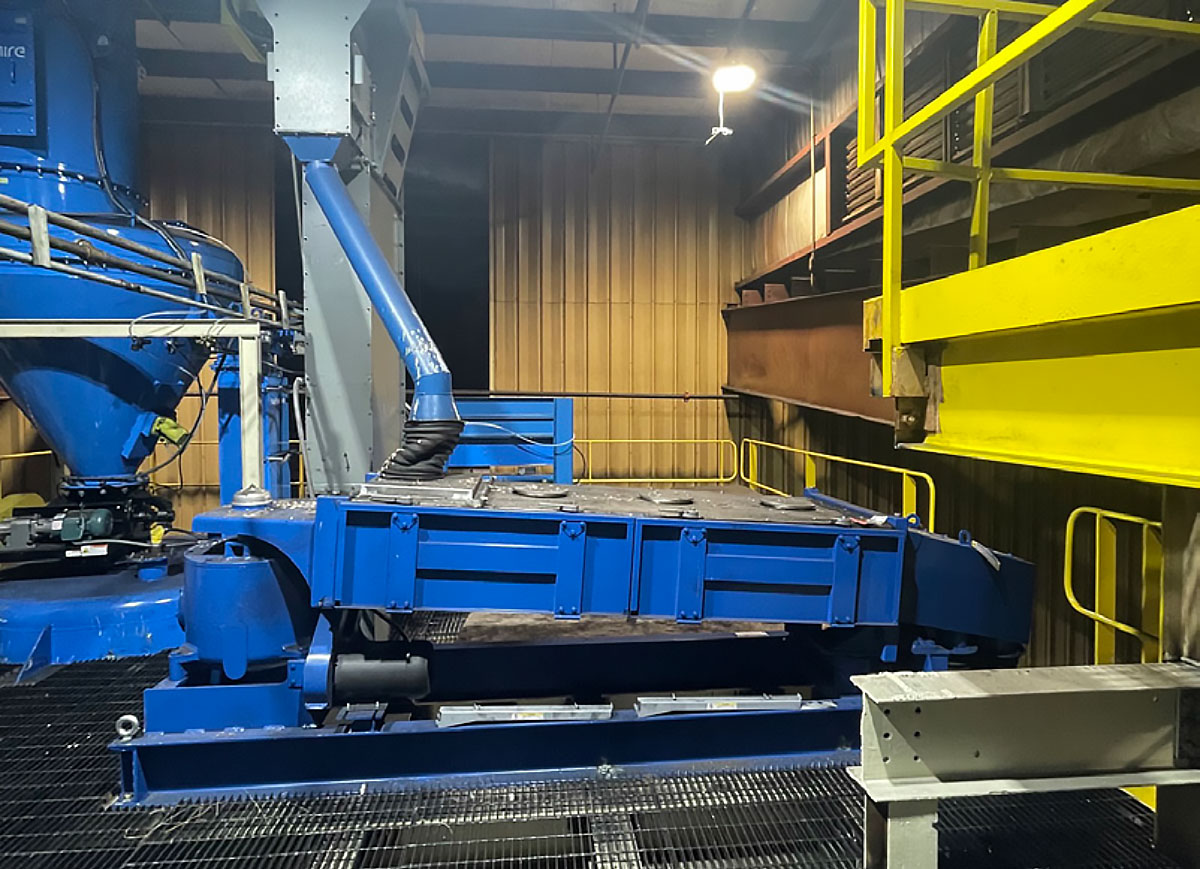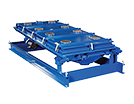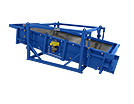Case Studies and Technical Articles
How have other companies — including Fortune 500 brands — used Rotex Group industrial screeners?
How High-Efficiency, Low-Maintenance Screeners Help Solids Processor Grow
Carbon Activated Corp., increases yield and throughput, and cuts maintenance more than 50% with the Rotex Group APEX Industrial Separator™
Enjoy an interactive version of this activated carbon case study by clicking here.
High-quality activated carbon, also called activated charcoal, plays a role in our daily lives and is used across many applications. The industries that use this material in their products, or to process them, include water purification, air and gas handling, precious metals recovery, and food and beverage production. Common materials used to produce activated carbon include coal, wood, and coconut shells. The recent growth of one of the largest activated carbon manufacturers in the world, Carbon Activated Corp. (CAC), serves to illustrate how the right screening equipment can make a significant difference in processing efficiency, uptime, and profitability.
Since its founding in 1993, CAC used three traditional, circular vibratory separators at its plant, but in recent years the business grew, which led to a new facility in Mt. Hope, W. Va. – and new separators.
“We needed higher output machines to keep up with our customers, we needed more efficient screening, and we needed to make a change” says Lionel Perera, founder and president. “The separators we had didn’t spread evenly across the screens, and there was too much clogging.”
This, in turn, led to lower yields and higher maintenance.
 One of five APEX separators installed at CAC to handle high accuracy and high output for a variety of customer needs.
One of five APEX separators installed at CAC to handle high accuracy and high output for a variety of customer needs.
New machines were needed that could perform well over a wide variety of applications. For example, producing carbon for manufacturers of disposable drinking water filters, such as those common in households, requires precision. When customers buy this material to manufacture carbon block filter media, it must meet exacting standards to remove chlorine, heavy metals, disinfection byproducts, and other contaminants while ensuring important minerals are retained. This requires carbon particles down to almost 1 micron, a fine-grade rating, with particles smaller than those in granules or powders. Conversely, high-speed output is of primary importance for producing larger granules such as crushed coal for use in charcoal briquettes. CAC serves both markets.
Perera was impressed with machines from Rotex Group that he had seen running at other companies and decided “this was the technology we were most interested in.” Following materials tests at the Rotex Group laboratory, which met CAC’s desired output and yield targets, the company purchased APEX Industrial Screeners. The first machine, a three-deck model, was installed in 2017 at CAC’s Compton, Calif., facility. Soon after, another three-deck APEX was purchased for the Compton facility, and through 2021 CAC purchased three more machines for the developing New Hope, W.Va. plant. These included a three-deck machine for finer materials, and two more two-deck machines for higher output of materials with less demanding specifications. Due to the latter involving a coarser material, options were added that include abrasion-resistant liners and special low-wear inlet and discharge options.
 Segmented screen panels provide easy access for fast maintenance and higher productivity.
Segmented screen panels provide easy access for fast maintenance and higher productivity.
High Performance and Efficiency Gains
The company improved its production as desired with higher output, yield, and efficiency with the new installations in ways that are closely interrelated.
Output is higher using the new machines. The previous machines, used prior to the APEX Screeners, remain in use for smaller production runs and less demanding applications. On average, the new machines process two tons per hour (metric) of the powders and fine-grade materials on machines with three screening decks or tiers. That output increases to 3 tons per hour for more coarse materials, which use two decks.
Yield is higher because less product is wasted, with less carryover and reprocessing of undersized and oversized particles. In fact, Perera’s decades in the carbon business have led to a related pro tip: “We can run two sizes of screens on a single deck. This is a great help for applications with very narrow specifications because it helps us further increase our yield.” This is a unique “best of both worlds” capability of the APEX machine because there are multiple segmented screen panels per deck as opposed to one large screen, allowing companies to use two different screen mesh sizes for one separation – one screen panel might allow for higher output and yield, while the other contributes to achieving the desired final product specification.
Efficiency has improved due to the units’ gyratory reciprocating motion; it fully stratifies and conveys particles evenly across the nominal 18 square feet of each deck’s rectangular screening and conveying surface. Additionally, the back-and-forth reciprocating motion improves particle contact on and through the screens unlike vibratory units that “bounce” particles into the air, which reduces time on the screen.
 The sleek ergonomic design of the APEX helps increase safety and decrease plant downtime.
The sleek ergonomic design of the APEX helps increase safety and decrease plant downtime.
Maintenance and Uptime Contribute to Success
Maintenance and downtime are of course also related to fast, efficient processing and contributes in several ways to the benefits CAC has experienced.
The gyratory reciprocating motion has reduced screen blinding (i.e., clogging or blinding) versus the preexisting vibratory units, and further cleans material from the mesh by driving cleaning balls in compartments on the underside of the screen. The machine’s unique design heavily contributes to its ease of maintenance, as screen removal for cleaning as well as changeovers is much faster. This owes to the APEX’s side doors, which allow access to each individual screen panel. A single operator can maintain an APEX unit for high productivity and cost-effectiveness.
This ease of use leads Perera to say, “I can do it all myself,” although he has 250 employees to handle the work. As a result, maintenance cleaning takes about 30 minutes on the new units as opposed to an hour or more for the preexisting machines.
Taken as a whole, CAC’s new separators have helped the company realize improvements in throughput, efficiency, first-time quality, maintenance, and, based on the company’s growth, customer satisfaction.
Click here to download Rotex Group Carbon Application Case Study PDF.




